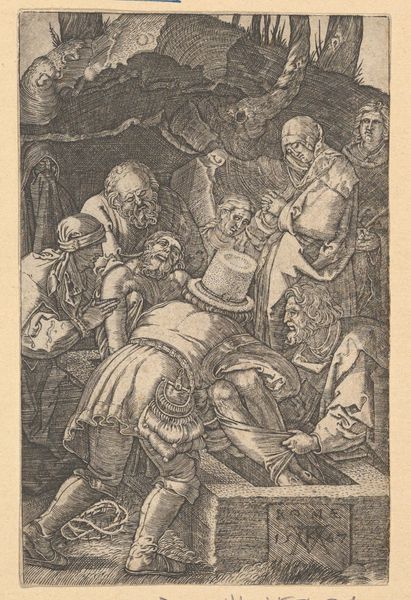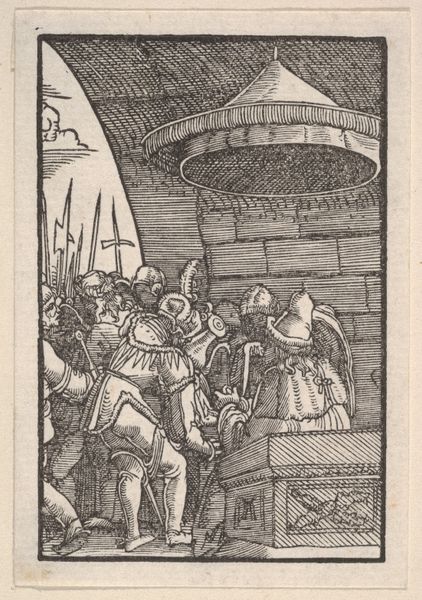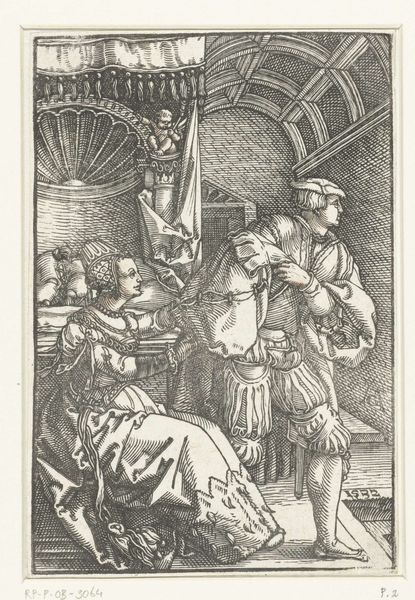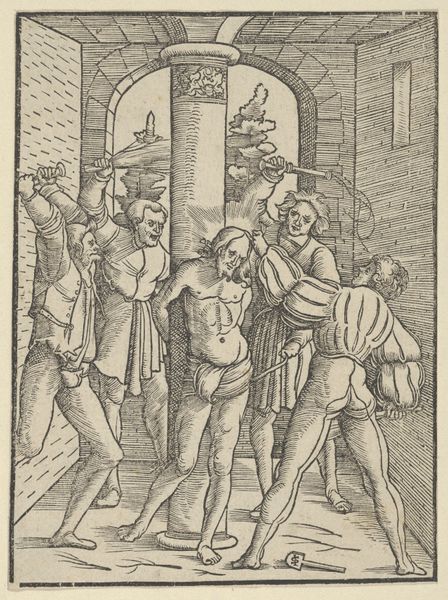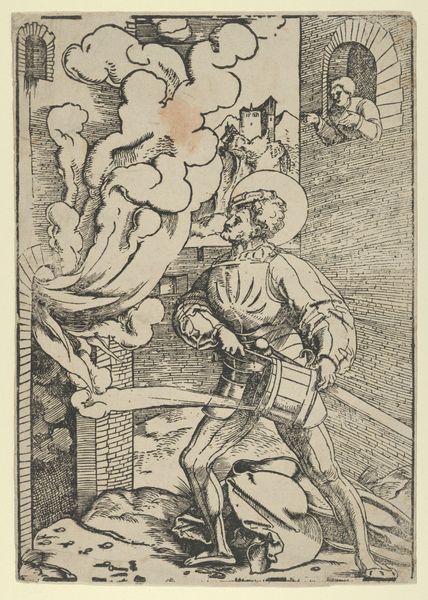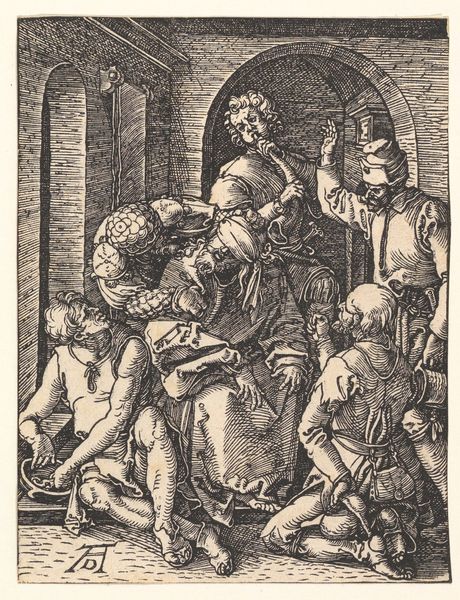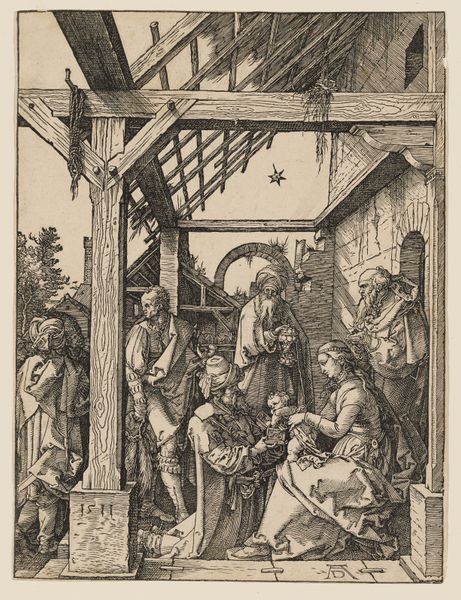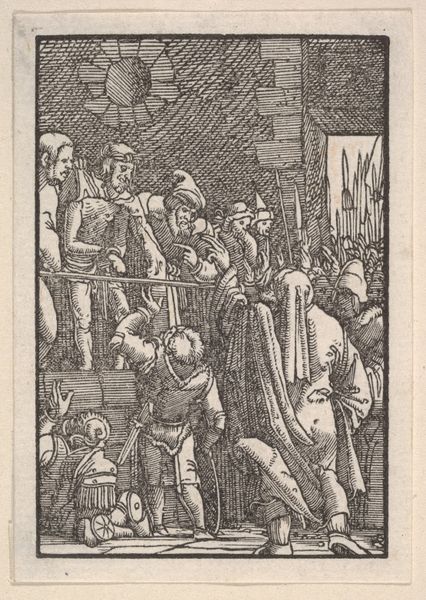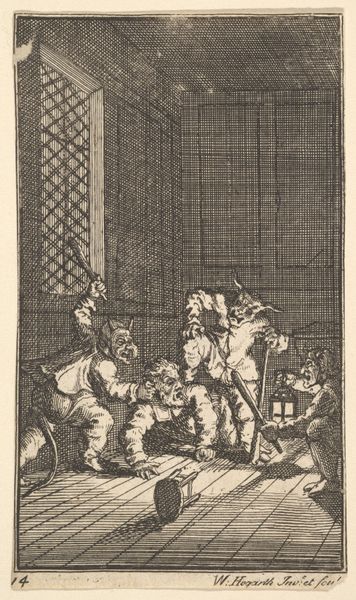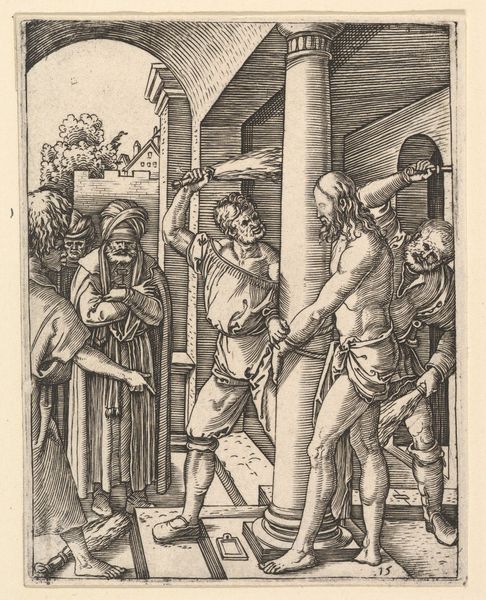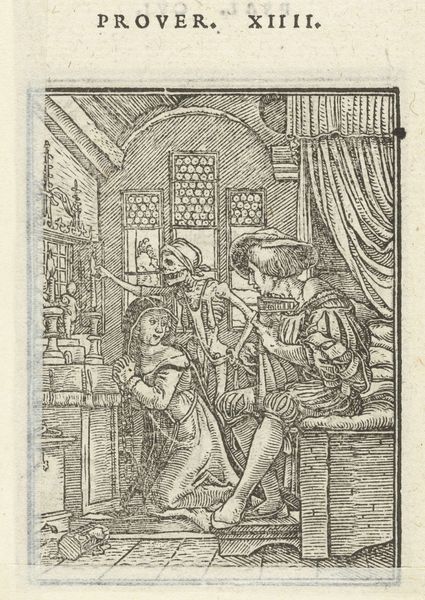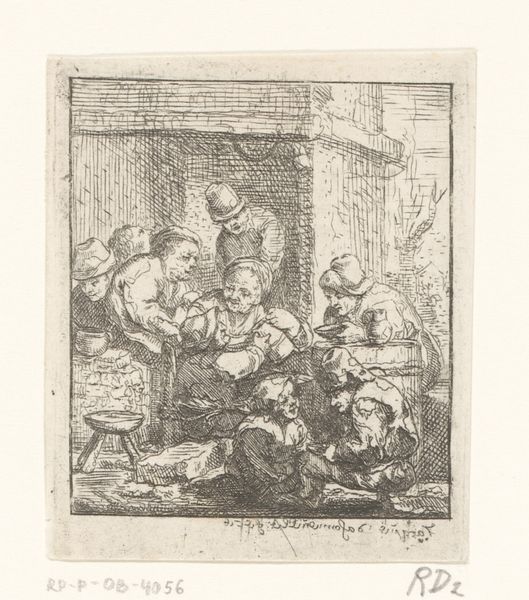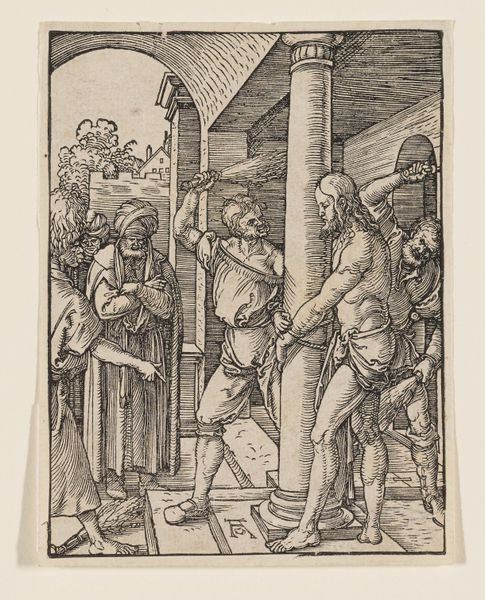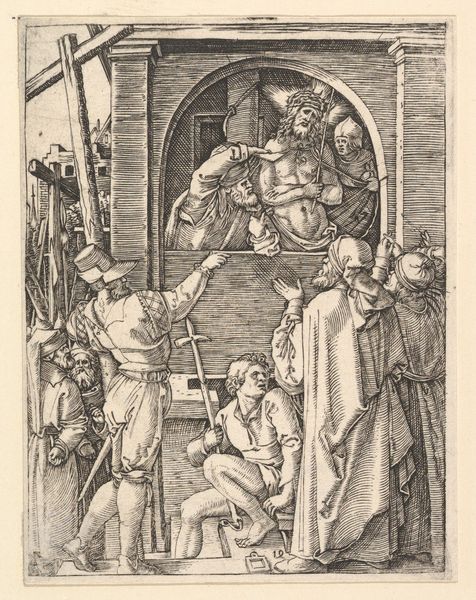
The Flagellation of Christ, from The Fall and Salvation of Mankind Through the Life and Passion of Christ 1508 - 1518
0:00
0:00
drawing, print, engraving
#
drawing
# print
#
figuration
#
column
#
history-painting
#
northern-renaissance
#
engraving
#
christ
Dimensions: Sheet: 3 1/8 × 2 3/16 in. (7.9 × 5.5 cm)
Copyright: Public Domain
Curator: Up next we have "The Flagellation of Christ," an engraving by Albrecht Altdorfer, part of his series, "The Fall and Salvation of Mankind Through the Life and Passion of Christ," created between 1508 and 1518. Editor: It hits you right away, doesn't it? So much pent-up aggression rendered in such intricate detail. Even though it’s a small print, the claustrophobia and brutality are palpable. Curator: Absolutely. Altdorfer's skillful use of engraving brings a raw, almost harsh quality. Notice the tightly packed figures and the oppressive architecture? The stark contrast emphasizes the torturers' frenzy against Christ’s resigned figure. Editor: And that's precisely it. The composition drives the eye directly to Christ, bound and vulnerable, at the center, literally framed by the looming column and the barbarity on either side. The lines practically vibrate with violence. Curator: The setting is important too. It’s not just a random place; Altdorfer is consciously placing this biblical scene within an architectural structure, perhaps implying a breakdown of societal order. The gestures—the whips, the clenched fists, the tormented expression—are quite pronounced. Editor: It’s interesting how he uses light, or the lack thereof, to create depth and mood. The deep shadows intensify the drama, drawing us into this disturbing moment. Makes you wonder about the relationship between power and suffering that Altdorfer is hinting at. Curator: Precisely. This is the Northern Renaissance, and Altdorfer is known for injecting deep emotion into his religious subjects. One might even say that he transforms a well-known episode into an incredibly human drama filled with terror and pain. Editor: Thinking about it, the work kind of echoes beyond the purely religious realm; it mirrors how easily cruelty can overtake us, doesn’t it? Brilliantly rendered and deeply unsettling, I would say. Curator: I think that's the true brilliance here; to witness and absorb not just what the artist created, but what we internalize, that in turn gives meaning to an artwork like this.
Comments
No comments
Be the first to comment and join the conversation on the ultimate creative platform.
